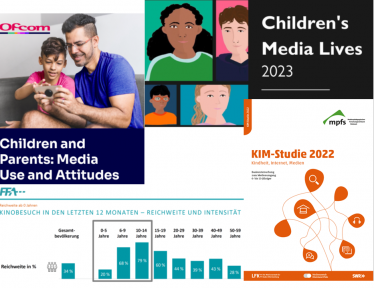 Data on children’s viewing habits is useful for both the development and distribution of children’s films. We therefore take a look here at irregular intervals at qualitative or quantitative studies that are dedicated to children’s media life in various countries. After Denmark, now Germany and Great Britain.
Data on children’s viewing habits is useful for both the development and distribution of children’s films. We therefore take a look here at irregular intervals at qualitative or quantitative studies that are dedicated to children’s media life in various countries. After Denmark, now Germany and Great Britain.
Children and Parents: Media Use and Attitudes looks at media use, attitudes and understanding among children aged 3-17. It also includes findings on parents’ views about their children’s media use, and how parents of children aged 3-17 monitor and manage their children’s online activity.
A rich and detailed qualitative complement to this quantitative survey of media literacy is provided by Children’s Media Lives. Set up in 2014, this study tracks the media behaviours, experiences and attitudes of a group of children (with as consistent a cohort as possible) aged between eight and 17, from all over the UK and with a variety of backgrounds. There are currently 21 children who participate in the study. It focuses on the motivations and context for media use and how media interacts with daily life and the domestic circumstances of the children in the study.
Both reports are provided by Ofcom and are part of its Making Sense of Media programme.
Since 1999, the Medienpädagogische Forschungsverbund Südwest, mpfs (Media Education Research Network Southwest) has regularly conducted a baseline study on the significance of media in the everyday lives of children (aged 6 to 13). The KIM study is also designed as a long-term project in order to adequately reflect the constantly changing framework conditions of media offerings and the associated changes. As part of the KIM study, around 1,200 children are interviewed in person and their main carers are interviewed in writing.
The national film funding organisation, the Filmförderungsanstalt, FFA, also regularly provides data material. The FFA’s own studies and expert reports, commissioned by or with the help of the FFA, provide information on visitor behaviour in cinemas as well as the structures and prospects of the film business.
In July 2023, their research took a detailed look at young cinema-goers aged between 0 and 19 for the first time. The results show that cinema attendance in the 6-9, 10-14 and 15-19 age groups is well above average. The frequency of cinema attendance is also above average among 10 – 14 and 15 – 19 year olds.
Introduced by Margret Albers
